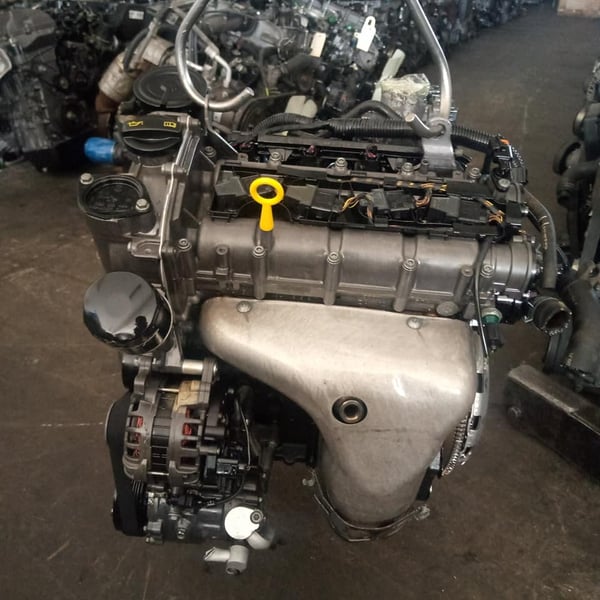Enhance your machinery with a high-quality clp engine.
Enhance your machinery with a high-quality clp engine.
Blog Article
The Function of a Clp Engine in Revolutionizing Engine Performance and Sustainability
The introduction of CLP engine innovation offers a turning point in the automotive sector, where performance and sustainability assemble in unmatched ways. By optimizing combustion procedures and permitting dynamic modifications in compression ratios, these engines not just assure improved gas performance and reduced exhausts yet additionally challenge traditional engineering paradigms. As the market grapples with the pressing need for greener solutions, the implications of adopting CLP technology expand far past plain performance metrics. What remains to be seen is just how these technologies will certainly improve the future landscape of automobile engineering and environmental duty.
Understanding CLP Engine Technology
As the vehicle sector consistently looks for ingenious services to enhance efficiency and efficiency, comprehending CLP engine innovation becomes essential. The term CLP stands for Compression-Low Stress, a cutting-edge engine layout that concentrates on maximizing combustion processes and reducing exhausts. This innovation operates by preserving a low-pressure atmosphere within the combustion chamber, which facilitates a much more complete gas shed and decreases unburned hydrocarbons.
Among the essential features of CLP engine modern technology is its capability to readjust the compression ratio dynamically. This flexibility permits the engine to run efficiently throughout various driving problems, enhancing gas economy while all at once enhancing power output. Furthermore, CLP engines leverage advanced products and design concepts to decrease weight and thermal losses, better adding to total effectiveness.
Moreover, the combination of digital control systems plays an important role in handling the engine's performance criteria. These systems enable real-time modifications to ignition timing and fuel shot, maximizing combustion for both power and effectiveness. By understanding CLP engine innovation, stakeholders in the auto sector can better value its possibility in driving the future of engine design, performance, and sustainability.
Efficiency Enhancements Offered
CLP engine modern technology delivers considerable efficiency improvements that establish it apart from conventional engine styles. Among the key benefits of CLP engines is their ability to operate successfully across a broader variety of rates and lots. This flexibility translates right into boosted torque delivery and acceleration, offering a much more responsive driving experience.
Furthermore, the sophisticated combustion procedure made use of in CLP engines maximizes fuel-air blending, bring about greater thermal performance. This improvement not only optimizes power result yet additionally decreases power loss, causing an engine that executes better under various conditions.
Additionally, the modular architecture of CLP engines allows for easier integration with crossbreed systems, magnifying their efficiency capacity - clp engine. This versatility enables manufacturers to design vehicles that accommodate customer requirements without sacrificing dexterity or power
The accuracy engineering associated with CLP innovation additionally contributes to reduce friction and wear, boosting engine durability and decreasing the frequency of upkeep. Generally, these efficiency improvements setting CLP engines as a leading option in the pursuit of high-performance, reliable, and functional engine remedies.
Ecological Advantages of CLP Engines
Among the most engaging advantages of CLP engines hinges on their environmental advantages, which are progressively crucial in today's automotive landscape. These engines are created to optimize gas effectiveness, significantly reducing carbon emissions contrasted to traditional burning engines. By utilizing innovative combustion strategies and cutting-edge products, CLP engines advertise cleaner exhaust outcomes, adding to boosted air quality.
Additionally, the decrease in gas intake not just causes lower greenhouse gas emissions yet also preserves valuable natural deposits. As nonrenewable fuel source reserves diminish, the change towards CLP innovation stands for a calculated move in the direction of sustainability. The engines are commonly compatible with alternate gas, further improving their eco-friendly allure and allowing for a varied energy profile.
Additionally, the lightweight layout of CLP engines aids decrease lorry weight, which consequently lowers the power required for propulsion. This results in lower operational energy consumption and a decreased environmental footprint. In summary, CLP engines stand at the center of initiatives to mitigate climate change and promote sustainable methods in the automobile market, personifying a future where efficiency and ecological duty are not equally unique.
Comparison With Traditional Engines
While typical engines have lengthy controlled the automobile sector, the intro of CLP technology offers a significant shift in performance and efficiency. Traditional interior combustion engines mostly depend on fuel burning, which not only restricts thermal effectiveness but also contributes to greater emissions. In comparison, CLP engines utilize advanced thermal monitoring and a special combustion process, boosting fuel performance and substantially decreasing greenhouse gas exhausts.
Additionally, traditional engines operate set power contours, which can impede efficiency in varying driving problems. CLP engines, however, are made to adapt their performance dynamically, offering optimum power shipment based upon real-time demands. This versatility brings about enhanced acceleration, responsiveness, and total driving experience.
Maintenance likewise varies considerably; standard engines frequently need frequent oil adjustments and component replacements as a result of damage. clp engine. CLP engines, with fewer her explanation relocating components, promise minimized maintenance requirements and longer functional lifespans

Future Prospects and Innovations
As the automotive landscape advances, the future of engine technology is significantly concentrated on advancements that improve performance and sustainability. The Clp engine, with its one-of-a-kind style and operational effectiveness, is poised to play a pivotal duty in this improvement. Future advancements might entail developments in materials scientific research, enabling the building of lighter and a lot more durable elements, hence minimizing overall vehicle weight and boosting fuel performance.
Additionally, the integration of expert system and artificial intelligence into engine monitoring systems is anticipated to maximize performance dynamically, enabling real-time adjustments based upon driving problems. These technologies can even more decrease discharges and boost energy use.
Additionally, research study into alternate gas, including hydrogen and biofuels, offers exciting possibilities for Clp engines, straightening performance with green campaigns. clp engine. As regulatory structures end up being stricter, the adoption of such innovations will certainly be vital in attaining sustainability goals without jeopardizing power
Verdict

Report this page